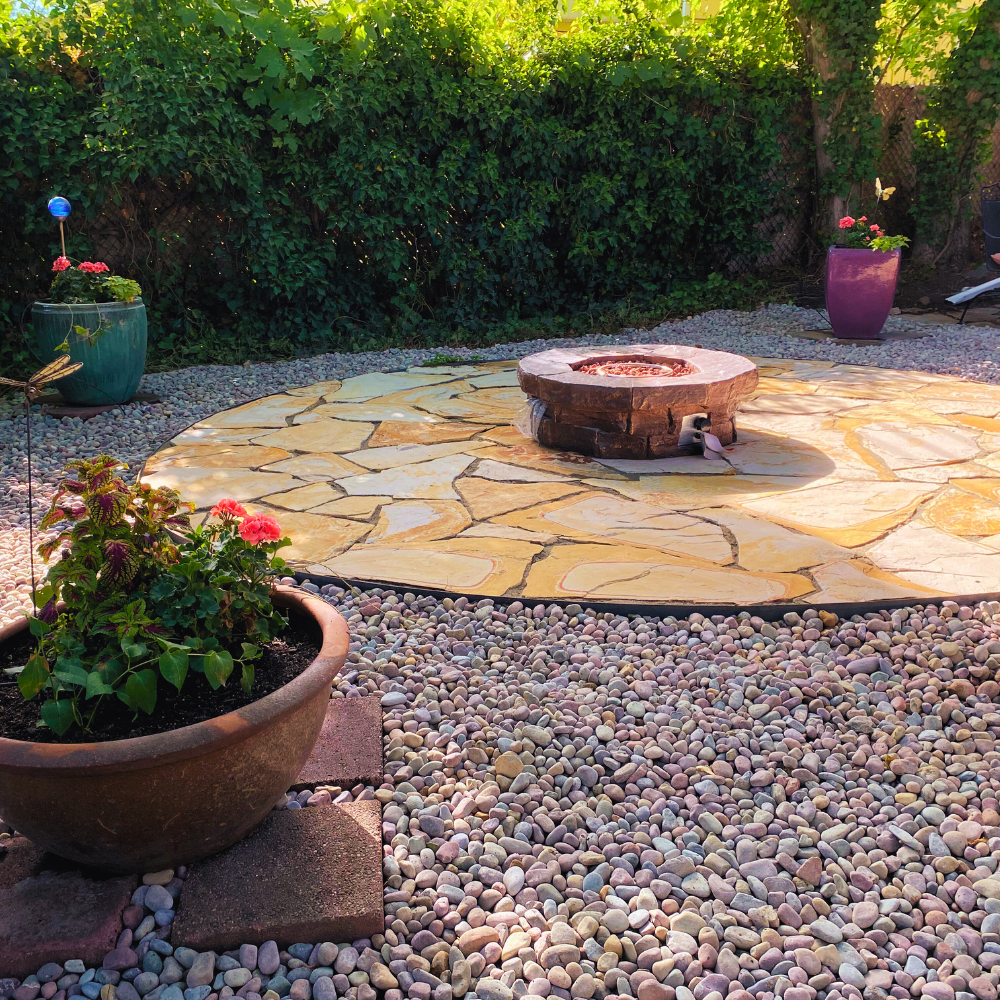
Blending Hardscape and Softscape
Blending Hardscape and Softscape for a Balanced Landscape
Creating a visually appealing and functional outdoor space is often created by using the right balance of hardscape and softscape elements. Whether you’re designing a new yard in Utah’s unique climate or refreshing an existing landscape, integrating both aspects ensures harmony between natural beauty and structural durability.
What Is Hardscape vs. Softscape?
Before diving into design strategies, let’s define the key components:
- Hardscape refers to the non-living, structural elements of landscaping, such as patios, walkways, retaining walls, edging, fire pits, decks, and pergolas. These features provide stability, function, and design structure.
- Softscape includes all living elements—plants, trees, flowers, grass, shrubs, and garden beds—which bring color, texture, and movement to the landscape.
Finding the right mix of both is essential to creating a balanced landscape that is aesthetically pleasing, low-maintenance, and sustainable.
Why a Balanced Landscape Matters
A well-planned combination of hardscape and softscape offers several benefits:
✅ Curb Appeal: A visually appealing landscape increases property value.
✅ Functionality: Hardscape elements create outdoor living spaces, while softscape adds beauty and comfort.
✅ Sustainability: The right balance can reduce water usage and maintenance needs.
✅ Erosion Control: Hardscape structures like retaining walls help prevent soil erosion, while plant roots stabilize the ground.
How to Blend Hardscape and Softscape for a Cohesive Look
1. Define Spaces with Hardscape Features
Use patios, stone walkways, or paver pathways to establish functional zones. For example, a flagstone walkway leading to a garden or a pergola-covered seating area creates clear divisions while maintaining flow.
💡 Pro Tip: Use metal landscape edging (such as Link & Lock Edging) to separate garden beds from hardscape, keeping everything neat and organized.
2. Integrate Plants into Hardscape Features
Soften the look of stone and concrete by incorporating greenery. Some ideas include:
🌿 Planting ornamental grasses along retaining walls for contrast.
🌺 Adding flower beds around patios for a natural touch.
🌳 Using climbing vines on pergolas or trellises to blend hardscape with nature.
3. Choose Complementary Colors & Textures
Ensure your hardscape materials (brick, wood, stone, or metal) complement your softscape choices.
✔ For a modern look: Pair concrete pavers with drought-tolerant plants like lavender or yucca.
✔ For a rustic feel: Use natural stone with lush, wildflower gardens.
✔ For a minimalist design: Opt for metal edging with sculptural succulents.
4. Use Water-Wise Landscaping for Utah’s Climate
Since Utah has a dry climate, it’s important to incorporate xeriscaping principles:
💧 Choose drought-resistant plants like sagebrush, juniper, or Russian sage.
💧 Use gravel, decorative rocks, and mulch instead of high-maintenance lawns.
💧 Install a drip irrigation system to efficiently water plants.
Final Thoughts
A balanced landscape design seamlessly integrates hardscape for structure and durability with softscape for beauty and environmental benefits. Whether you’re installing patios, stone pathways, or decorative metal edging, ensure your design flows naturally with plant life to create a functional and inviting outdoor space.
Want to transform your yard? Contact Sassy Grass Landscape for expert design services, or check out Link & Lock Edging for precision-crafted metal edging solutions!
If you're doing a DIY project and need edging, visit Link and Lock Edging - High Quality 4 Inch Tall Metal Edging
